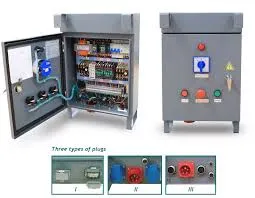Understanding Butyl Rubber Sealant The Ultimate Choice for Waterproofing
When it comes to effective waterproofing solutions, one material that stands out in the market is butyl rubber sealant. Known for its exceptional adhesive properties and flexibility, butyl rubber sealant is extensively used across various applications, making it an invaluable asset for both professional and DIY projects.
What is Butyl Rubber Sealant?
Butyl rubber is a synthetic rubber formed through the polymerization of isobutylene with a small amount of isoprene. This unique chemical structure gives butyl rubber its distinct properties, including excellent adhesion to a variety of substrates and impressive weather resistance. Butyl rubber sealant is available in different formulations, and the black variant is particularly popular due to its aesthetic appeal on roofs, gutters, and other exterior applications.
Key Features of Butyl Rubber Sealant
1. Waterproofing Capabilities One of the primary reasons to choose butyl rubber sealant is its effective waterproofing abilities. It forms a strong and flexible seal that prevents water ingress, making it ideal for applications in wet environments. Whether sealing roofs, windows, or outdoor fixtures, butyl rubber guarantees long-lasting protection against leaks.
2. UV Resistance Butyl rubber sealant is often formulated to resist ultraviolet (UV) light degradation, ensuring that it maintains its integrity over time. This characteristic makes it suitable for outdoor applications, where exposure to sunlight can be a significant factor in the longevity of sealing products.
3. Temperature Tolerance Butyl rubber remains flexible even under extreme temperature conditions. It can withstand both high heat and freezing temperatures, which makes it an ideal choice for areas subject to thermal expansion and contraction. This quality ensures that the seal remains intact regardless of the environmental conditions.
4. Adhesion to Various Surfaces Butyl rubber sealant adheres well to a variety of surfaces, including metal, glass, wood, and most plastics. This versatility makes it an excellent choice for diverse applications, from automotive repairs to construction projects.
butyl rubber sealant black

5. Easy Application Butyl rubber sealant typically comes in a tube or caulking gun format, making it easy to apply. Its thick consistency helps control the amount used, allowing for precise application and less waste.
Applications of Butyl Rubber Sealant
The uses of black butyl rubber sealant are numerous. Here are a few common applications
- Roofing It is frequently used in roofing projects to seal edges and overlaps, providing a watertight barrier. Its UV resistance also helps maintain the seal's performance over time. - Gutters and Downspouts Butyl rubber sealant can repair leaks in gutters and downspouts, preventing water damage to the structure below.
- Automotive In the automotive industry, butyl rubber is used to seal windshields and other glass components, as its flexibility accommodates the movement of the vehicle structure.
- HVAC Systems Ductwork and sealing joints can benefit from butyl rubber sealants, ensuring that air leaks are minimized and efficiency is maximized.
Conclusion
In conclusion, if you're looking for a reliable and versatile sealing solution, black butyl rubber sealant is undeniably a top choice. Its excellent waterproofing properties, UV and temperature resistance, and strong adhesion capabilities make it suitable for various applications. Whether you are working on a large construction project or tackling home repairs, butyl rubber sealant provides the durability and performance necessary to ensure long-lasting results. By understanding the benefits and applications of butyl rubber sealant, you can make informed decisions for your projects and enjoy peace of mind knowing that you are using one of the best sealing materials available.
-
XIANGFAN Rubber Tape-Ultimate Solutions for All Your Insulation NeedsNewsJun.24,2025
-
XIANGFAN Rubber Tape-Protection for Industrial and Residential ApplicationsNewsJun.24,2025
-
XIANGFAN Rubber Tape: Superior Safety and Sealing for Demanding EnvironmentsNewsJun.24,2025
-
XIANGFAN Rubber Tape: Reliable Solutions for Every Electrical ChallengeNewsJun.24,2025
-
XIANGFAN Electrical & Industrial Tape: Powering Reliability Across IndustriesNewsJun.24,2025
-
XIANGFAN Electrical & Industrial Tape: Excellence in Every ApplicationNewsJun.24,2025
